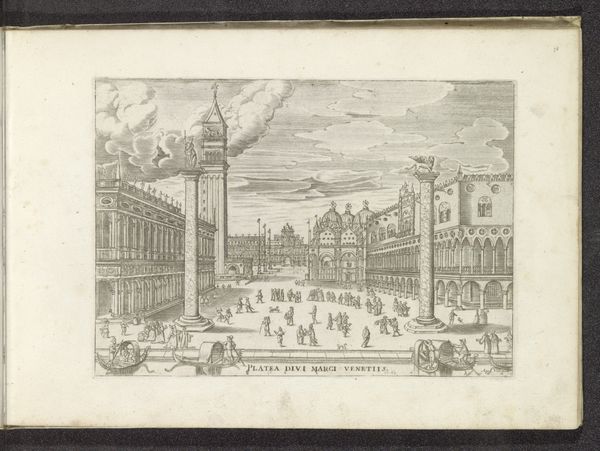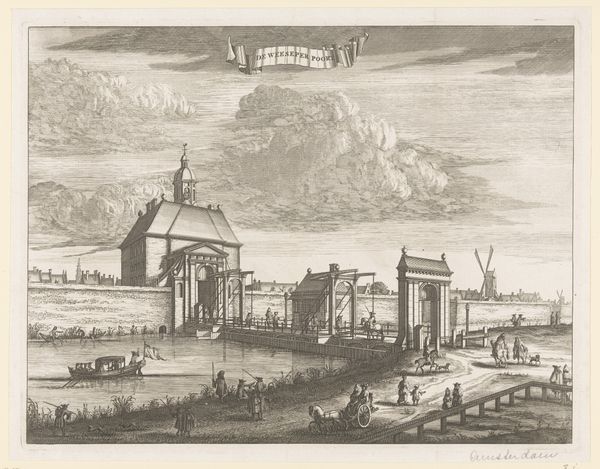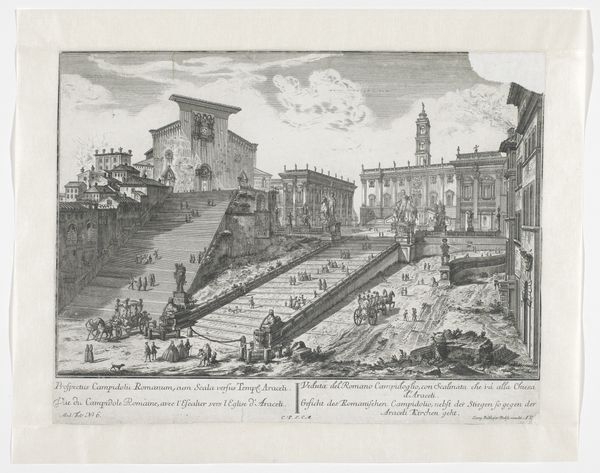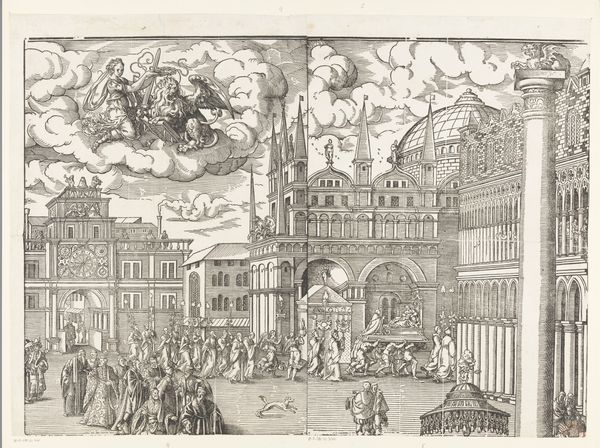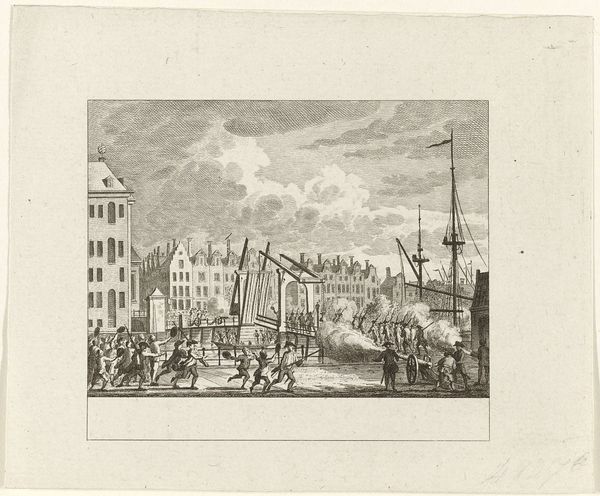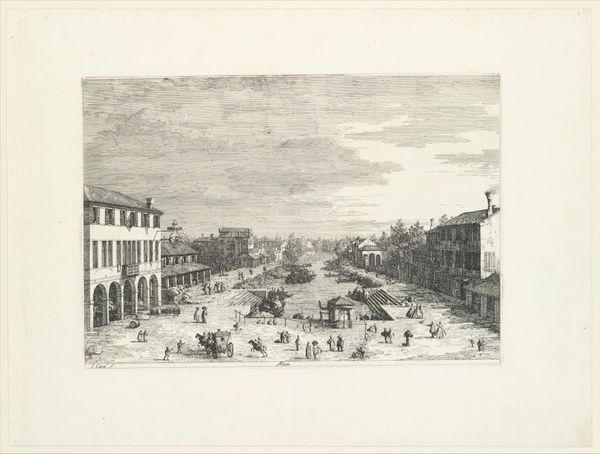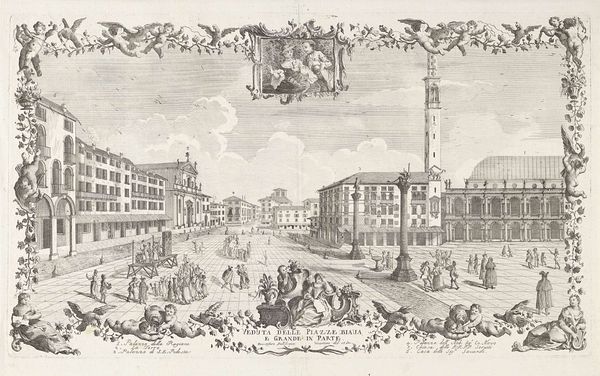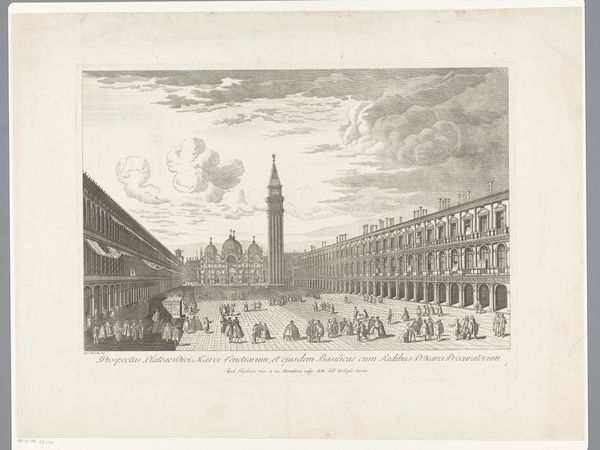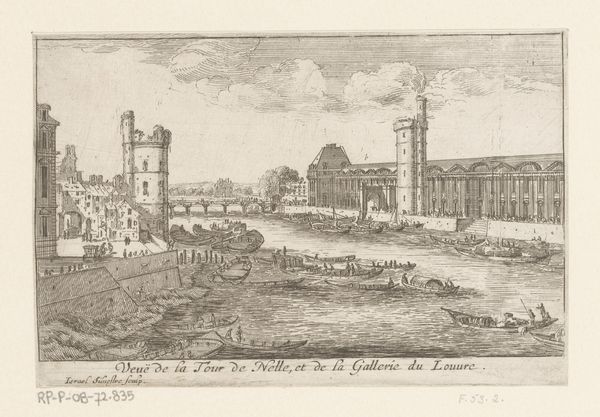
print, etching, engraving
#
venetian-painting
#
baroque
# print
#
etching
#
old engraving style
#
landscape
#
pen-ink sketch
#
cityscape
#
history-painting
#
engraving
Dimensions: height 309 mm, width 423 mm
Copyright: Rijks Museum: Open Domain
Curator: This is "View of the Piazzetta in Venice" created between 1590 and 1632. This engaging cityscape comes to us via Pieter de Jode I and his mastery of etching and engraving. Editor: The immediate impression is one of airy grandeur, achieved with delicate lines. The balance in the composition, those vertical lines of the campanile and columns, almost act as a grid, providing structure amidst the detailed figures. Curator: Exactly, it’s a compelling use of line. The textures – from the billowing clouds to the patterned facades – result from an intricate web of precisely placed marks. See how the artist manipulates light and shadow to suggest depth? Editor: Indeed. The scene pulses with recognizable symbols: The winged lion of St. Mark perched atop the column represents the city’s patron saint. This is more than just a depiction of a place; it is a symbolic portrait of Venetian power. It reinforces Venice’s self-image as a strong, divinely favored republic. Curator: Precisely. The organization of the space subtly guides the viewer’s eye toward the Basilica of San Marco in the distance, enhancing a feeling of receding perspective while also accentuating spatial relationships. Editor: And look at the figures populating the scene; they hint at Venice's global reach and busy, robust commerce. These carefully included details reflect a self-assured culture proud of its civic rituals and trade links. The statues in the lower corners reflect triumph. Curator: An excellent point. By positioning those allegorical figures so prominently in the foreground, de Jode integrates classical motifs within a decidedly contemporary cityscape. Editor: Studying the imagery provides a deeper connection with Venice's past—its enduring myths, emblems, and claims to distinction as a center of trade, art, and civility. Curator: Analyzing this engraving exposes just how much information about artistic choices can be conveyed through formal elements. Editor: Yes, examining recurring icons of the era alongside careful composition reveals aspects about the culture in which this piece was created.
Comments
No comments
Be the first to comment and join the conversation on the ultimate creative platform.
